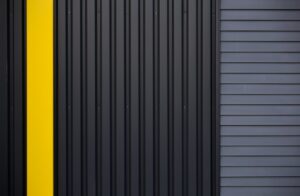Why Your Garage Door Won’t Close Properly: The Complete 2025 Australian Troubleshooting, Safety and Compliance Guide
A garage door that refuses to shut can turn a simple school-run morning into a security headache and a safety hazard. Across Australia, technicians report that more than eight out of every ten call-outs for garage doors that stay open could have been prevented with a handful of quick checks done at home. Before you organise a service visit that may cost upwards of $180 just for the call-out fee, spending a few minutes with this guide can help you diagnose the problem, understand any legal obligations and decide whether the fix is truly a do-it-yourself job or one that needs a licensed professional. The information that follows draws on Australia’s model Work Health and Safety laws, AS/NZS 4505:2010 for garage door safety, recent updates from Safe Work Australia and real-world feedback from technicians who service everything from B&D sectional doors in Sydney’s inner west to roller doors battling the salt air of coastal WA. The language is plain, the advice is practical and the focus is unmistakably Australian.
Understanding the Australian Garage Door Diagnostic Framework
The first step is to sort the fault into one of three broad buckets: sensor related, mechanical or electrical. Most doors installed after 2012 include photo-electric safety beams mandated under AS/NZS 4505. These small lenses sit near floor level on each side of the opening. If they face even slight misalignment from accidental bumps, swelling timber jambs or inquisitive kids, the opener logic board assumes an obstruction and keeps the door open. Mechanical faults sit in second place on the leaderboard of culprits. Here we find fatigued torsion springs, frayed lift cables, dented tracks and jammed roller wheels. Because Australian climates swing from Darwin humidity to Canberra frost, metal components expand, contract and corrode in ways that owners often underestimate. Electrical faults round out the trio. A tripped RCD in the switchboard, a flat remote-control battery or a motor control board that has absorbed one summer storm surge too many can all leave the door hanging halfway like an unresolved question.
Safety Sensor Misalignment: The Australian Climate Twist
Technicians describe sensors as the door’s “eyes”. If either eye is dirty, blinded by direct sunlight or no longer points perfectly at its partner, the opener refuses to close in order to protect children, pets and vehicles. Coastal regions present a specific challenge: salt crystals build a hazy film on lenses within months. Inland, red dust carried on hot northerly winds coats sensors just as effectively. The simplest test involves watching the small LEDs on the sensor housings. Solid green or amber often means alignment is correct, whereas a flashing light signals trouble. Gently nudging the bracket until both lights glow steady usually restores normal service. If strong afternoon sun hits the western sensor head-on, shading it with a short length of irrigation tubing slit down the side creates an instant, standards-compliant sunshield. Keep in mind the sensors need roughly ninety millimetres of clear line of sight; stacking paint tins nearby or storing sporting gear under the beam will send the door straight back up every time.
Remote Control and Wall Button Failures in Australian Homes
The humble button cell earns little attention until it fails. A remote that still opens the door may not have enough remaining voltage to drive the radio signal for the full closing cycle, particularly if the antenna wire on the opener is shorter than the factory specification thanks to an over-enthusiastic cable tie. Australian remotes commonly use CR2032 or, in older tilt doors, A23 alkaline cylinders. Replacement takes less than a minute yet solves thousands of service calls each year. If a fresh battery changes nothing, try operating the motor from the hard-wired wall button. A positive result here isolates the fault to the remote or its coding. Each opener brand sold locally follows a slightly different learn-button sequence; for instance, most Merlin models require pressing the learn button until an LED flickers, then pressing the remote twice within twelve seconds. B&D Complete Series motors have a similar process but insist on a four-second hold for the first press. If neither the wall console nor the remote closes the door, the diagnosis slides towards a sensor or limit-setting issue.
Electrical Supply and Power Quality Considerations
Australian switchboards now feature mandatory residual current devices, and nuisance trips after a summer lightning strike are common. Check that the light on the opener turns on when you attempt to operate the door. If the light stays off, head to the switchboard and confirm the circuit breaker labelled “GPO garage” or “power” is in the ON position. In cyclone-prone regions such as North Queensland, voltage dips can scramble the opener’s logic board memory. A full power reset often helps: turn the opener off at the socket, wait thirty seconds, then restore power and attempt to close again. Newer premium motors include a battery backup pack that kicks in during outages; however, if the battery has expired after its typical three-year life, the charger circuit can drag down the main supply and confuse the door’s safety routines. Replacing the pack or disconnecting it entirely is an easy DIY fix as long as the unit is unplugged first and you observe correct polarity when installing the new battery.
Mechanical Problems: Springs, Cables and Tracks Across Diverse Australian Climates
Where sensor lights glow steadily and power appears normal, mechanical resistance is the next suspect. Sectional doors rely on torsion springs wound to store enough energy that a healthy adult can lift the door one-handed. When a spring loses tension, the opener must haul extra mass and will often give up or reverse to protect the drive gear. A simple balance test involves disconnecting the motor via the manual release cord, then lifting the door halfway. If it slides back to the floor, the springs need adjustment or replacement. On roller doors, look for cables spilling from the drum or sheets of corrugation snagging on each other because of track distortion. Australian coastal suburbs accelerate rust; within three years of installation, unlubricated galvanised fittings can produce a gritty scraping noise that signals imminent cable fray. Inland, especially in high-UV areas such as Alice Springs, the plastic drums that guide torsion springs may become brittle and crack. Regular visual inspection is critical because a failing spring can release stored energy with alarming force, a hazard well recognised in Safe Work Australia advisory material.
Limit Settings and Opener Calibration for Popular Australian Models
Modern openers learn where to stop by recording how far they travel during an initial calibration cycle. If you change the door weight by adding insulation panels for bushfire protection, or if swelling jambs restrict travel in humid months, the motor will either stop short or jam against the floor seal then reverse. Re-teaching the limits is straightforward on most units. As an example, a Merlin MT100 series opener enters programming mode when you hold the up arrow and down arrow simultaneously until the light blinks. You then drive the door fully open, tap the set button, drive it fully closed and tap set again. The unit stores these positions and automatically calculates soft start and soft stop ramps. B&D smart openers follow a similar routine but require a final confirmation press on the wall console. Completing this process after any mechanical adjustment keeps the door compliant with AS/NZS 4505’s requirement that doors stop or reverse within two seconds of sensing an obstruction at the closed limit.
When to Call an Australian Professional and What It May Cost
Working on springs or high-level tracks without proper equipment introduces significant risk, which is why both the model WHS Regulations and state equivalents classify powerful springs as high-risk plant components. If the balance test fails, cables appear frayed or the door binds and creaks along the full length of travel, engaging a licensed technician is the safer path. Costs vary by state, call-out timing and door type. The following table summarises typical 2025 pricing gathered from service companies in five capitals.
| City | Call-out Fee (AUD) | Spring Replacement (pair) | Sensor Alignment Service | Motor Replacement (mid-range) |
|---|---|---|---|---|
| Sydney | 185 | 420 | 160 | 790 |
| Melbourne | 175 | 400 | 150 | 760 |
| Brisbane | 170 | 395 | 145 | 750 |
| Perth | 195 | 465 | 170 | 820 |
| Adelaide | 160 | 380 | 140 | 730 |
These figures include GST and standard weekday labour. Emergency after-hours visits can add fifty to one hundred per cent. Always confirm the technician’s licence or association membership. Look for accreditation from the Australian Garage Door Association or state-based building regulators, and check that any electrical work, including motor replacement, is carried out under a valid electrical contractor licence.
Preventative Maintenance Checklist for Australia’s Varied Conditions
You can dramatically extend component life and preserve compliance by scheduling quick seasonal tasks. Every autumn, when temperatures start to drop, wipe tracks with a clean rag and apply a lithium-based spray lubricant labelled safe for garage doors. This reduces friction and prevents water ingress that causes flash rusting after winter rains. In spring, use a level to confirm that the bottom rail sits evenly on the floor; uneven settling of driveway slabs during the wet season in tropical regions can create a gap big enough for sensor beams to mis-detect. During summer heatwaves, particularly in western Sydney and regional SA where daytime temperatures top forty degrees, inspect the nylon hinges on sectional doors for hairline cracks. The plastic weakens under prolonged heat and will fail suddenly when the door’s weight shifts. Finally, in late winter perform the balance test again and verify the opener’s auto-reverse function by placing a 40-millimetre high block of timber on the threshold; AS/NZS 4505 calls for reversal within two seconds or less than seventy-five millimetres of extra downward travel.
Legal and Regulatory Snapshot for Australian Homeowners
While no single national law targets garage doors alone, the model Work Health and Safety Act 2011, adopted by every jurisdiction except Victoria, creates a duty to manage risks posed by plant and structures. In practical terms, that means keeping the door in safe working order if you employ anyone on the property, including casual cleaners or gardeners. The Australian Standard AS/NZS 4505:2010 for garage doors sets performance benchmarks, including the requirement for responsive obstruction detection and the colour coding of springs. Builders must follow the National Construction Code when installing doors in bushfire-prone areas, which can necessitate upgraded seals and self-closing features. Failure to comply, if it leads to injury, exposes the owner or person conducting a business or undertaking to fines that start at $50,000 for individuals and can exceed $3 million for corporations. Safe Work Australia’s 2023 statistics show an increasing number of prosecutions involving powered doors at commercial sites, so domestic owners should not assume the laws stop at the warehouse gate.
Frequently Asked Questions from Australian Homeowners
One question resurfaces every summer: why does my garage door reverse when it hits the floor in January but behaves perfectly in July? Timber frames expand with humidity, reducing the gap under the seal; the motor senses the added resistance and decides the path is blocked. Re-teaching the close limit or trimming the bottom weather strip often resolves the issue. Another popular query relates to power outages. After a blackout, many B&D openers flash an error code and sit idle. Performing a power cycle and, if necessary, re-entering the rolling-code remotes brings them back to life without further intervention. Owners of smart homes wonder if Wi-Fi interference can stop the door closing. In most cases the 433 MHz radio used by Australian remotes is immune, but some mesh networks generate harmonics that swamp weaker remotes. Relocating the opener’s antenna wire away from metal roof battens restores range. Finally, costs vary widely across the country, so homeowners in Perth’s outer suburbs may pay forty per cent more for a spring change than their counterparts in suburban Adelaide, primarily because of travel surcharges and the higher price of freighted parts across the Nullarbor.
Final Thoughts: Peace of Mind Through Informed Action
A garage door that refuses to shut is more than an inconvenience; it is a security gap, a potential injury source and under Australian law a manageable safety risk that sits squarely with the property owner. By understanding how sensors, remotes, power supply and mechanical balance interact, and how Australia’s climate nudges each of these factors, you can diagnose most problems in under ten minutes. Clean lenses, fresh batteries and a quick limit reset solve the majority of stubborn doors. When the problem proves mechanical, or if the door shows any sign of falling out of balance, calling a qualified technician protects both household safety and legal compliance. Regular maintenance, documented in a simple logbook, keeps the door gliding smoothly from the Darwin wet to the Hobart chill. The result is peace of mind every time you press the button and watch the panel move down, latch, and seal out the world exactly as it should.






